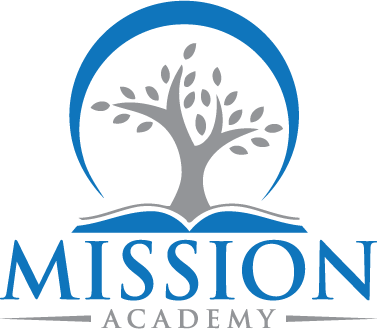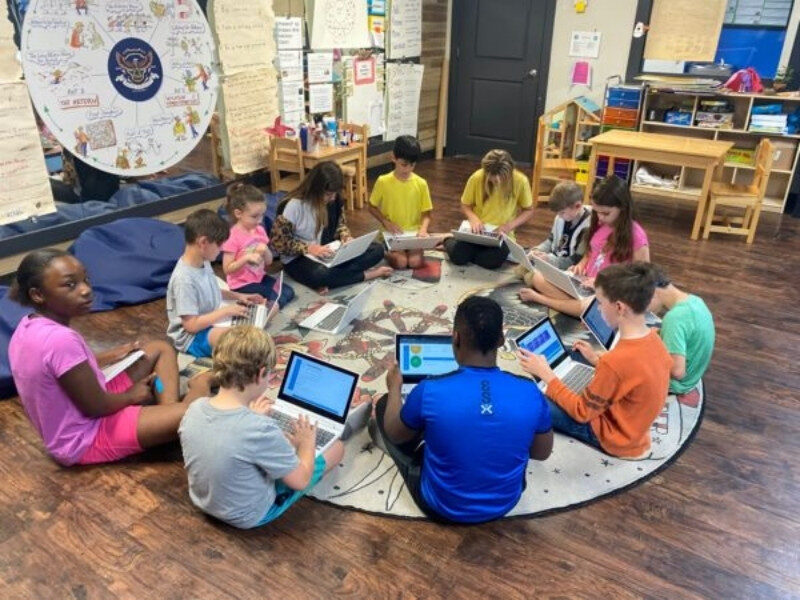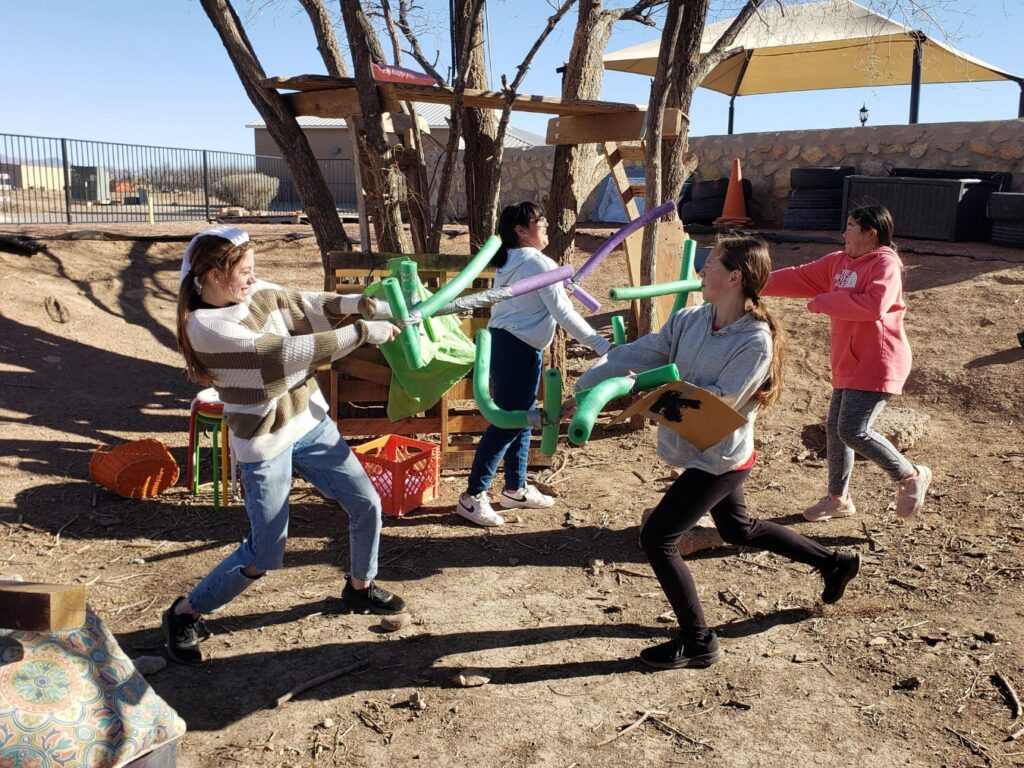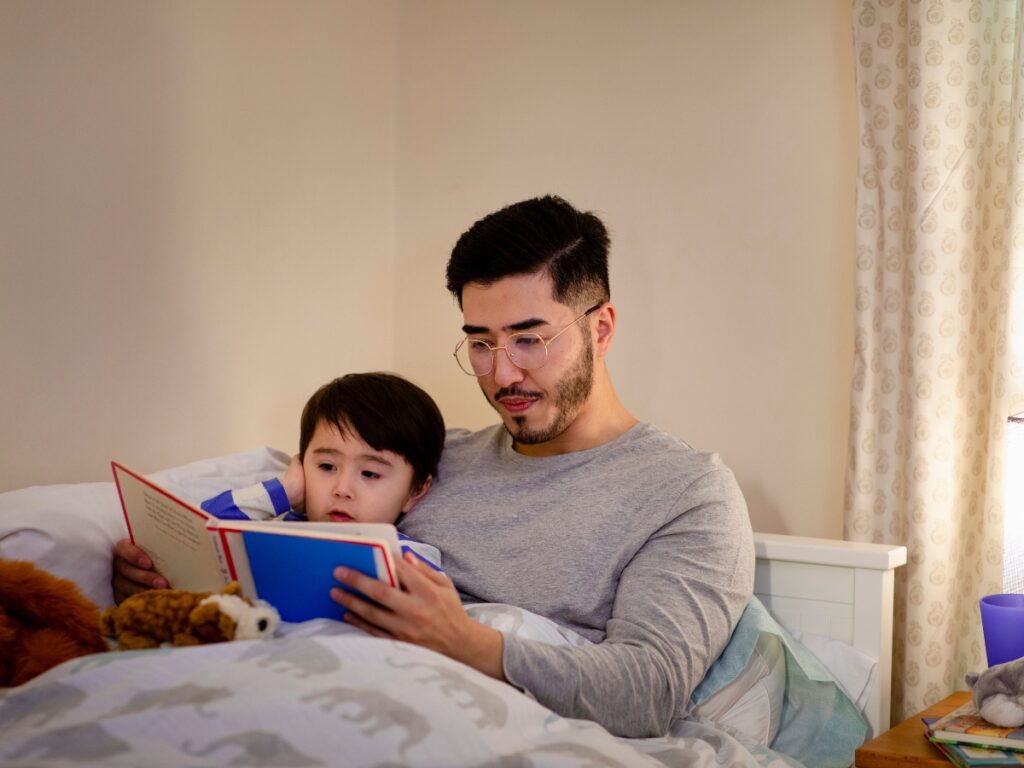Some Benefits of Project-Based Learning
Project-Based Learning (PBL) engages students in real-life scenarios and helps them mature as human beings. PBL gives students the chance to develop skills that matter in the working world. PBL is better than traditional learning because students learn by actively applying new skills and experiencing the connection between learning and usefulness.
What’s the ideal learning environment for your child? Have you ever thought about that? It’s something we think about all the time. As educators, we’re interested in giving students the best opportunities we can offer based on our understanding of child development and human learning.
Students learn best when they are engaged in something that matters to them. Of course, it’s fair to say that humans learn best when it matters. While this may seem obvious, it’s astounding how little it’s affected the traditional classroom setting. Study after study shows that students students are more motivated when learning information directly relevant to their life or livelihood. In otherwords, they’re personally interested.
Yet, the traditional school setting does not foster this type of student engagement and motivation. The connections between learning and “real-life” are left out to dry until professional life starts. By then, so much is lost and disregarded by the student, including a love for learning.
Why traditional classrooms operate this way is a whole other topic – probably a volume of books. However, we can point out many aspects of traditional classrooms that achieve disabling physical, emotional, and mental results in students. For example, a few of them are:
- The physical posture bodies assume all day as children sit at desks for lectures and “book work” – not to mention what this teaches children psychologically about their station in life.
- Groups of same-aged peers foster more social pressure and internal inhibition than multi-aged groups where students can adopt different mentoring and learning roles. There is a disconnect between ages and the valuable learning that comes from these interactions.
- Learning happens passively through styles dominated by lectures and study, which instills a less active consumer role instead of the more active creator role.
- Students don’t have a say in their learning and growth agendas, dampening the motivating spark to take hold and engage their life’s path.
- Teachers are stuck instructing students en masse by way of standardized plans, material, and made-up problems. Teachers lack the time to individually mentor students. The lack of personal attention deprives students of learning opportunities.
To counteract these results, PBL (project-based learning) has emerged as an educational curriculum to give students (young humans) the learning opportunities and guidance they need and deserve. PBL encourages students to explore and solve real-world problems. It is a hands-on learning style that empowers by doing.
This approach helps students develop a sense of independence and self-motivation. And these positive benefits extend well beyond classroom walls. Let’s take a look at a few of the major benefits of PBL approach.
Students Learn by Doing What Matters to Them
Like many aspects of human development, students tend to perform better when learning in a subject area that interests them. And, it’s not just about the child’s interest. The excitement and passion of being interested in something is also an essential factor in student learning.
There’s a difference between memory and skills – like trivia about flowers vs successfully growing a flower garden. Traditional classrooms focus on memory and “knowing the material.” However, PBL is about developing actionable, relevant knowledge that empowers students to apply and demonstrate what their abilities.
Did you know that when students work on a self-directed project they experience a sense of purpose and value, and feel that the effort they put in matters?
Every human being, as soon as they’ve developed the appropriate motor coordination and cognitive skills learns better this way. Roughly speaking, that’s around the beginning of elementary school.
Students Learn by Developing New Skills
Another important benefit of PBL is that it enables students to hone new skills. It’s one thing to read about how something works. It’s another thing to experience the working.
Students who are engaged in activities that require them to use the skills they are learning are more likely to develop, retain, and evolve those skills than students who are not. Because PBL students are learning experientially, their whole person is engaged – physical, emotional, and mental. These students use and gain critical thinking, problem-solving, collaboration, and responsibility-based skills.
Additionally, they frequently work on projects in multi-aged groups. This learning environment mimics any and every professional setting on the planet. Students can take on different roles and develop traits that will bring a lifetime of benefits.
For example, an older student can develop leadership skills as they mentor and role model for the younger students. Younger students can gain confidence from successfully working with older students. Multi-aged PBL groups develop many people skills and an unbridled enthusiasm for work and learning.
Students are Motivated to Keep Learning
Perhaps the greatest benefit of PBL is that it fosters self-motivation and a love of learning. A positive reinforcement loop in created in a PBL classroom. Students direct their own learning, apply skills directly, and accomplish completed projects. They experience the satisfaction of self-motivated learning and achievement – which instills confidence and a passion for more.
In PBL, you learn how to learn, how to intentionally develop, and how to engage in meaningful work. You discover how to identify what is relevant and what will directly impact your success. Students wielding this kind of knowledge love to learn because they’ve experienced how empowering it is.
Helps Teachers Help Students
PBL gives mutual benefits to students and teachers alike. It’s a whole-system educational method where every piece is integral to the other.
By using project-based learning, teachers can use real-world scenarios to spark meaningful discussions about the world around them. They can also create hands-on learning opportunities that help bring classroom subjects to life.
This approach is especially practical when it comes to allowing students to solve problems and develop products relevant to the 21st-century workplace. And, it is not just about the products of the project. PBL is also about practice. It is about making mistakes and learning from them. It is about having a safe environment to try new things and fail without fear of embarrassment.
PBL provides teachers and students the ability to work together through the phases of projects and student development cycles. Just like a professional mentor in the workplace, a teacher can coach students through the various stages, emotions, and experiences a person goes through while accomplishing the tasks of projects.
There are more advantages of PBL classrooms, but we hope these highlights will help you frame your understanding of the differences between PBL and traditional settings.
If you’d like to learn more, don’t hesitate to reach out to us. You can call (575-449-4796) or email us at: ???@??????




